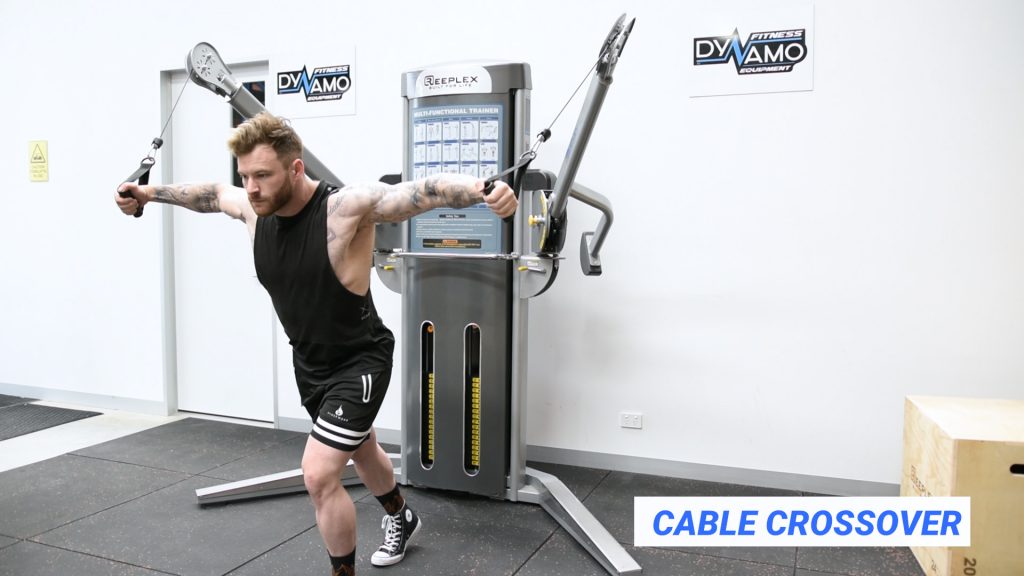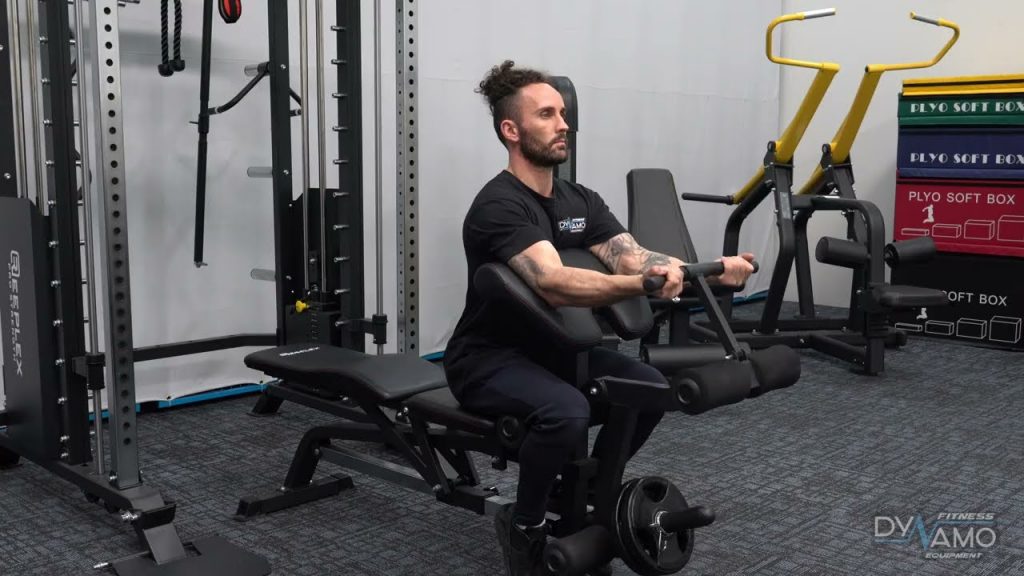
Effective Functional Trainer Exercises You Need to Try
Looking to level up your fitness game? In this post, we’ll explore the best exercises to perform on a functional trainer machine. Functional trainers are versatile pieces of gym equipment that offer a wide range of workout options for all fitness levels. Whether you’re a beginner or an experienced athlete, functional training on these machines can help improve strength, stability, and flexibility.
By mimicking real-life movements, functional trainers provide a more practical approach to fitness. With adjustable resistance levels, you can customize the intensity and progress at your own pace. Get ready to elevate your training experience with these top-notch exercises!
Exploring the Best Functional Trainer Exercises for a Full-Body Workout
Incorporating a functional trainer into your workout routine can provide you with a versatile and effective way to target multiple muscle groups and achieve a full-body workout. By incorporating compound exercises like squats, lunges, and rows, you can engage several muscle groups simultaneously, maximizing your time and effort.
To further enhance your workout on a functional trainer, consider utilizing cable machine exercises. These exercises allow you to work against resistance from various angles, helping to improve strength and stability in different planes of motion. Cable exercises also promote better muscle activation as they require constant tension throughout the movement.
Balance and core stability are vital components of any effective workout routine. With a functional trainer, you can focus on these areas by performing exercises such as single-arm presses and woodchops. These movements challenge your balance while engaging your core muscles for stability.
One of the advantages of using a functional trainer is the ability to experiment with different grips and stances. This allows you to target specific muscle groups more effectively. For example, adjusting your grip width during cable rows can emphasize different areas of your back muscles.
By combining these various exercises with a functional trainer, you can create an efficient full-body workout that targets all major muscle groups. Here’s an example of a full-body workout using a functional trainer:
-
Squats: 3 sets x 10 reps
-
Cable Rows: 3 sets x 12 reps
-
Lunges: 3 sets x 10 reps per leg
-
Single-Arm Presses: 3 sets x 8 reps per arm
-
Woodchops: 3 sets x 12 reps per side
Remember to adjust the weight according to your fitness level and gradually increase it as you get stronger.
Strengthening Upper Body Muscles with Cable Chest Fly and Standing Rows
The key to building upper body strength is targeting the right muscles. Two effective exercises that can help you achieve this on a functional trainer are the Cable Chest Fly and Standing Rows. Let’s dive in and explore how these exercises can strengthen your upper body.

Cable Chest Fly: Targeting Pectoral Muscles, Shoulders, and Arms
The Cable Chest Fly primarily focuses on the pectoral muscles while also engaging the shoulders and arms. This exercise involves pulling the cables towards the center of your body, mimicking a hugging motion. By adjusting the cable height, you can vary the range of motion and target different areas of your chest muscles.
Pros:
-
Targets pectoral muscles for a well-rounded chest workout.
-
Engages shoulder and arm muscles for added strength.
-
Can be adjusted to accommodate different fitness levels.
Cons:
-
Requires proper form to avoid strain or injury.
-
May require assistance or guidance from a trainer initially.
Standing Rows: Strengthening Upper Back Muscles
Standing Rows work the upper back muscles, including the rhomboids and trapezius. This exercise involves pulling the cables towards your body while keeping your back straight. It helps improve posture by strengthening key upper body muscles responsible for maintaining good alignment.
Pros:
-
Strengthens upper back muscles for improved posture.
-
Engages core stability for additional benefits.
-
Allows variations in cable height to target specific muscle groups.
Cons:
-
Requires proper technique to prevent strain on the lower back.
-
Beginners may need assistance until they become familiar with the correct form.
Incorporating these exercises into your workout routine will not only enhance upper body strength but also promote good posture. Remember to adjust cable heights according to your fitness level and always prioritize proper form to avoid any injuries. Now let’s move on to exploring other effective exercises on a functional trainer.
Engaging Lower Body Muscles with Cable Lateral Lunge and Single-Arm Lateral Raise
To continue our exploration of the best exercises to perform on a functional trainer, let’s shift our focus to engaging the lower body muscles. Two highly effective exercises for this purpose are the Cable Lateral Lunge and Single-Arm Lateral Raise.
The Cable Lateral Lunge is an excellent exercise that targets multiple muscle groups simultaneously. By performing a lunge while using the cable machine for resistance, you engage your glutes, quadriceps, adductors, and abductors. This exercise helps improve lower body strength, stability, and overall athleticism.
On the other hand, the Single-Arm Lateral Raise is specifically designed to isolate and strengthen the deltoid muscles of your shoulders. By standing beside the cable machine and raising one arm out to your side against resistance, you effectively work on developing strong and defined shoulder muscles.
Both of these exercises can be customized based on individual fitness levels by adjusting the cable resistance. This allows beginners to start with lighter weights and gradually increase intensity as they progress.
Incorporating these exercises into your workout routine not only enhances lower body strength but also improves overall balance and coordination. They provide a dynamic challenge that engages multiple muscle groups in different dimensions.
So if you’re looking to take your lower body workout to the next level, give the Cable Lateral Lunge and Single-Arm Lateral Raise a try. You’ll be amazed at how they target specific areas of your legs and shoulders while adding variety to your training regimen.
Building Total Body Strength with Cable Front Squats and Pullthroughs
Cable front squats are an excellent exercise for building total body strength. By engaging multiple lower body muscles while challenging core stability, these squats provide a well-rounded workout. To perform cable front squats, attach a cable to a weight stack on a functional trainer machine.
Engaging Multiple Lower Body Muscles
The cable front squat targets muscles such as the quadriceps, hamstrings, glutes, and calves. Unlike traditional squats with free weights or a weightlifting bench, the cable attachment provides constant tension throughout the movement. This activates more muscle fibers and promotes greater muscle growth.
Challenging Core Stability
In addition to lower body engagement, cable front squats also challenge core strength and stability. The resistance from the cable forces you to engage your abs and back muscles to maintain proper form during the exercise. This helps improve overall core strength and enhances functional fitness.
Targeting Glutes, Hamstrings and lower back with Pullthroughs
Another effective exercise for a functional trainer is pull-throughs. This exercise primarily targets the glutes, hamstrings, and lower back muscles. It involves standing facing away from the machine with a long bar attached at waist height.
Improving Hip Mobility & Posterior Chain Strength
Pullthroughs are beneficial for improving hip mobility and strengthening the posterior chain—the group of muscles along your backside from your calves to your shoulders. By performing pull-throughs regularly, you can enhance your athletic performance in activities like running or jumping.
Promoting Overall Functional Strength
Incorporating compound movements like cable front squats and pull-throughs into your routine promotes overall functional strength. These exercises mimic real-life movements that require coordination between multiple muscle groups. As a result, you’ll develop not only raw strength but also improved balance and coordination.
By adjusting the cable height and resistance on the functional trainer, you can gradually increase the challenge and promote progressive overload for muscle adaptation. So, whether you’re aiming to build muscle mass or improve your athletic performance, cable front squats, and pull-throughs are excellent exercises to add to your workout routine.
Sculpting Arms and Shoulders with Biceps Curls, Triceps Pushdowns, and Rear Delt Flys
To achieve well-defined arms and shoulders, incorporating exercises that target specific muscle groups is essential. Here are three effective exercises you can perform on a functional trainer to sculpt your arms and shoulders: biceps curls, triceps pushdowns, and rear delt flys.
Biceps Curls
Biceps curls focus on isolating the biceps brachii muscles, which are responsible for flexing the elbow joint. By performing bicep curls, you can strengthen and define your arm muscles. To do this exercise, stand with your feet shoulder-width apart, holding the cable attachments with an underhand grip. Keep your elbows close to your body as you curl the handles toward your shoulders. Slowly lower them back down to complete one rep.

Triceps Pushdowns
Triceps pushdowns target the triceps brachii muscles located at the back of the upper arm. This exercise effectively tones and strengthens these muscles for more defined arms. Stand facing the functional trainer with a straight posture, gripping the cable attachment with an overhand grip. Keep your elbows close to your sides as you extend your forearms downwards until they are fully extended. Return to the starting position in a controlled manner to complete one rep.
Rear Delt Flys
Rear delt flys primarily engage the posterior deltoid muscles located in the shoulders. These exercises enhance shoulder stability while also contributing to a more aesthetically pleasing appearance. Begin by standing with feet shoulder-width apart and holding onto the cable attachments with an overhand grip. Keeping a slight bend in your elbows, pull your shoulder blades together as you bring your hands outwards until they are parallel to the ground. Slowly return to the starting position for one rep.
These exercises can be easily modified by adjusting cable attachments and resistance levels to suit your fitness level and goals. Incorporating these exercises into your workout routine will help you achieve stronger, more sculpted arms and shoulders.
Maximizing Your Workouts with Functional Trainer Exercises
Congratulations on completing the sections on the best exercises to perform on a functional trainer! You’re well on your way to maximizing your workouts and achieving your fitness goals. By incorporating these exercises into your routine, you’ll be able to target multiple muscle groups, improve strength and stability, and enhance overall functional fitness.
Discover the best fitness solutions at Dynamo Fitness Equipment. Whether you’re looking for an Olympic barbell for strength training, a basketball stand for outdoor fun, or a versatile dumbbell set for your home gym, we have it all. Our selection also includes inversion tables for back relief and more. Visit our fitness store in Adelaide today and elevate your workout routine with top-quality equipment!
FAQs
What is a functional trainer?
A functional trainer is a versatile piece of gym equipment that uses adjustable cable pulleys and various attachments to provide resistance during exercise. It allows for multi-planar movements that mimic real-life activities, making it ideal for improving overall strength, stability, and coordination.
Can beginners use a functional trainer?
Absolutely! While functional trainers are often associated with advanced athletes or fitness enthusiasts, they can be used by individuals of all fitness levels. Beginners should start with lighter weights or resistance bands and focus on mastering proper form before progressing to more challenging exercises.
How do I choose the right weight/resistance?
Choosing the appropriate weight or resistance depends on your current fitness level and goals. As a general guideline, aim for a weight or resistance level that challenges you without sacrificing proper form. You should be able to complete each exercise with control and without excessive strain.
Are there any safety precautions I should take while using a functional trainer?
Safety is paramount when using any gym equipment. Ensure that the cables and attachments are securely fastened before starting your workout. Maintain proper form throughout each exercise to minimize the risk of injury. If you’re unsure about a particular exercise or have any concerns, consult with a qualified fitness professional.
How often should I incorporate functional trainer exercises into my routine?
The frequency of incorporating functional trainer exercises into your routine depends on your overall fitness goals and current level of activity. Aim for at least three workouts per week, allowing time for rest and recovery between sessions. Consistency is key in achieving optimal results.
Can functional trainer exercises help with weight loss?
Functional trainer exercises can be an effective component of a weight loss program. By engaging multiple muscle groups and increasing overall strength, these exercises can boost metabolism and calorie burn. However, it’s important to combine them with a balanced diet and other forms of cardiovascular exercise for optimal weight loss results.
Is it necessary to warm up before performing functional trainer exercises?
Warming up before any exercise session is crucial to prepare your body for the workout ahead. Spend 5-10 minutes engaging in dynamic stretches or light cardio activities such as jogging or jumping jacks. This will increase blood flow to your muscles, enhance flexibility, and reduce the risk of injury during your functional trainer workout.
